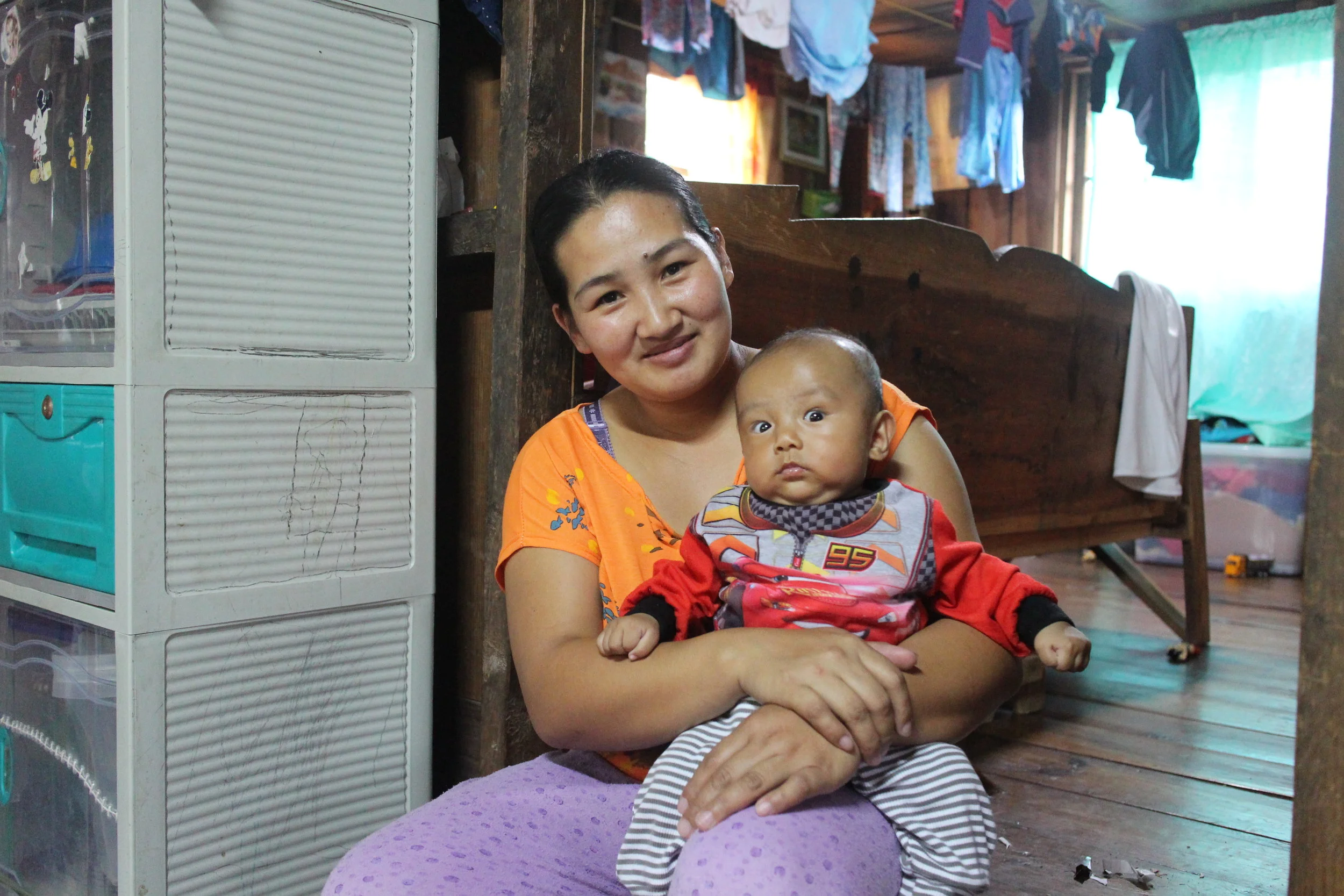Over the years, Kalsada’s brand has evolved from roasted coffees in jars that say the name of the farmer to kraft paper bags that say the name of the community we source the coffee from. I often get asked, “where is Auntie Leah and why am I not able to buy her coffee from you anymore?”
Kalsada Coffee in jars, circa 2014.
Auntie Leah retail bags, circa 2015.
When we started our journey of finding the best coffees in the Philippines, we were surprised at how difficult it was. We considered ourselves lucky to find Auntie Leah whose coffee were clean and had distinct flavor notes we liked. But she, like many smallholder farmers in the Philippines, could only produce a maximum of 35kgs. So naturally, we would also go to her neighbors and try to buy their coffees. In most occasions, we ended up empty-handed as the quality of her neighbors’ coffees were not the same as hers. And so, for the first two years of our exploration, we would seek out individual farmers, listen to their stories of growing and processing coffees and taste and try their lots. Most of the time, the coffees that scored the highest on the cupping table would be less than 35kgs.
To answer the question “where is Auntie Leah?” She is still in Sitio Belis. She just had a baby and we still work with her closely. However, you don’t see our bags with her name on it anymore because instead of purchasing her 35kg of green coffees that she processed herself, we pay for the cherries she brings to the mill every other day as well as all the cherries brought by her neighbors. We learned through our conversations and tastings with individual farmers the reasons for the low production and inconsistent qualities were:
- Because of its seasonality, coffee is not the primary crop. Farmers focus on growing vegetables because they can harvest it weekly, securing cash flow for their family.
- There is a lack of infrastructure and machinery to process the coffees. Majority of the farmers manually pulp coffee using a big mortar and pestle or with a hand-cranked pulper they made themselves. This process takes a great chunk of their time, not to mention the wastage created in the process. To save on time, farmers would consolidate three-days worth of harvest and process them all together instead of processing daily. This practice has a huge impact on quality.
- It rains a lot during harvest season and since farmers are not financially equipped to build suitable drying facilities, they are forced to either dry the coffees as fast as they can on roofs or settle with high moisture coffees.
- With these considerations, farmers are not encouraged to grow more nor invest in better agricultural practices. Most of the time, they will settle with mediocre practices and sell to the local market at low prices.
Farmers delivering their harvest while our mill was being constructed, circa 2015. (Photo courtesy of Kaye Lavin)
What we chose to do at Kalsada was to address all these individual concerns collectively. We built a washing station that processes not only Auntie Leah’s coffees but also her neighbors. We brought in a mechanical pulper that pulps all the coffees brought in everyday with minimum labor required. We built drying facilities ensuring coffees are free from fungal contamination and safe from occasional rain showers while maintaining a slow drying process. Instead of focusing on finding buyers for their coffees, farmers have a consistent buyer for their coffee cherry and incentivize the effort to wait for the cherries to fully mature before they are picked; an idea which was also sparked by listening to the farmers. They also shared with us that they harvest and process the coffees as soon as they can – including the immature cherries, dry them as fast as they can so that they can sell the coffees right away. This practice has been the primary reason why the majority of the coffees from this side of the country used to taste unripe and had either high moisture content or are dried too quickly.
Aunties and Uncles pose for a photo after delivering coffee cherry.
Four years into our operations, we no longer work with only 15 farmers whose names you might have come across in our early years. When you get a bag of Sitio Belis, it translates to 70 farmers who bring in their cherry to our mill everyday. We still get really picky in terms of buying the raw materials just like we were with our green purchases. We decline to purchase immature and over-ripe, deteriorating coffee cherry. We float the cherries when they arrive at the mill to get rid of defects. And everyone has an equal opportunity to have their coffees processed in the best possible way we know how.
We are still a long way from achieving production that will fill an entire container but now that the initial concerns of Auntie Leah and her neighbors are addressed, it opens another discussion on how we can grow healthier trees that will produce more cherries. There are always new concerns to be addressed and we’d be thrilled to chat about these with you over bottomless overflowing hot cups of coffee in Sitio Belis with Auntie Leah and her newborn baby.
Tere Domine, Country Director
Auntie Leah with her boys.






